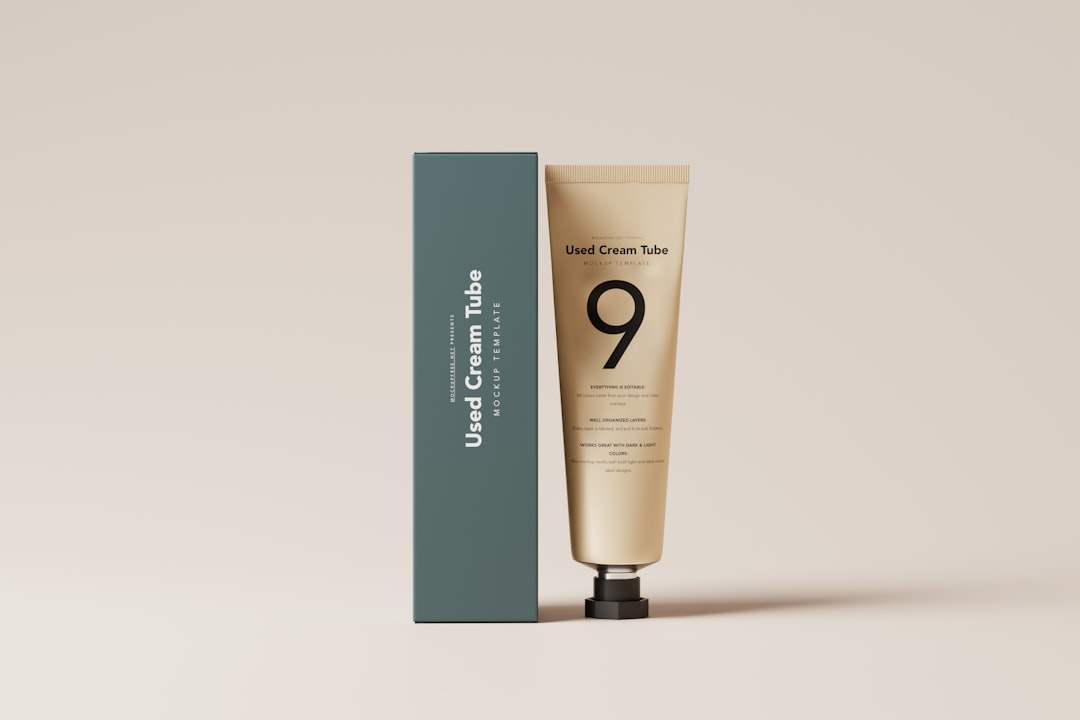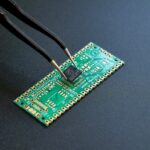When you consider laser hair removal, it’s essential to grasp how the process works. At its core, laser hair removal utilizes concentrated beams of light to target and destroy hair follicles. The pigment in the hair absorbs this light, which generates heat and ultimately damages the follicle, inhibiting future hair growth.
This method is particularly effective for individuals with darker hair and lighter skin, as the contrast allows the laser to focus more effectively on the hair pigment. However, advancements in technology have made it possible for various skin and hair types to benefit from this treatment. Before you undergo the procedure, a consultation with a qualified professional is crucial.
During this initial meeting, you will discuss your medical history, skin type, and hair characteristics. The practitioner will assess your suitability for the treatment and may perform a patch test to determine how your skin reacts to the laser. Understanding the intricacies of the procedure can help alleviate any concerns you may have, ensuring that you feel comfortable and informed as you embark on your hair removal journey.
Key Takeaways
- Laser hair removal targets hair follicles with concentrated light energy to inhibit future hair growth
- After treatment, avoid sun exposure and use sunscreen to protect the skin
- Moisturize and hydrate the skin regularly to promote healing and prevent dryness
- Avoid using irritating products and activities that can cause inflammation or damage to the treated area
- Monitor the healing process and consult with a professional for any potential side effects or concerns
Post-Treatment Care Instructions
Managing Discomfort and Inflammation
You may experience some redness or swelling in the treated area, similar to a mild sunburn. To alleviate your skin, apply a cool compress or ice pack for short intervals. This can help reduce inflammation and provide immediate relief. Your practitioner may also recommend over-the-counter pain relief medication if you experience discomfort.
Avoiding Certain Activities
It’s essential to avoid certain activities immediately following your treatment. Refrain from strenuous exercise or activities that cause excessive sweating for at least 24 hours, as sweat can irritate the treated area and potentially lead to complications.
Additional Precautions
Additionally, avoid hot baths, saunas, or swimming pools for a few days to minimize the risk of infection and ensure your skin has time to heal properly. By following these post-treatment care instructions, you can ensure a smooth and successful recovery.
Moisturizing and Hydrating the Skin

Keeping your skin moisturized and hydrated after laser hair removal is essential for promoting healing and maintaining skin health. After the treatment, your skin may feel dry or sensitive, making it crucial to apply a gentle moisturizer regularly. Look for products that are fragrance-free and formulated for sensitive skin to avoid any potential irritation.
Ingredients like aloe vera or hyaluronic acid can be particularly beneficial, as they provide soothing properties while helping to retain moisture. In addition to topical moisturizers, staying hydrated from within is equally important. Drinking plenty of water not only supports your overall health but also aids in skin recovery.
Hydrated skin is more resilient and better equipped to heal after any cosmetic procedure. By prioritizing both external and internal hydration, you can enhance your skin’s appearance and comfort during the recovery phase.
Protecting the Skin from Sun Exposure
| Method | Effectiveness | Notes |
|---|---|---|
| Sunscreen | High | Apply at least SPF 30 and reapply every 2 hours |
| Wearing protective clothing | High | Long-sleeved shirts, hats, and sunglasses |
| Seeking shade | High | Avoid direct sun exposure during peak hours (10am-4pm) |
| Avoiding tanning beds | High | Increased risk of skin cancer and premature aging |
One of the most critical aspects of post-laser hair removal care is protecting your skin from sun exposure.
To safeguard your skin, it’s advisable to apply a broad-spectrum sunscreen with an SPF of at least 30 daily, even on cloudy days.
This protective measure helps shield your skin from harmful rays that can exacerbate irritation and hinder healing. In addition to sunscreen, wearing protective clothing such as wide-brimmed hats or long sleeves can further minimize sun exposure. If possible, try to avoid direct sunlight during peak hours when UV radiation is strongest.
By taking these precautions seriously, you can ensure that your skin remains healthy and free from complications as it heals from the laser treatment.
Avoiding Irritating Products and Activities
In the days following your laser hair removal session, it’s crucial to avoid using irritating products on your skin. Harsh exfoliants, retinoids, or products containing alcohol can exacerbate sensitivity and lead to adverse reactions. Instead, opt for gentle cleansers and soothing lotions that are specifically designed for post-procedure care.
This will help maintain your skin’s integrity while promoting healing. Additionally, certain activities should be avoided during this time frame. For example, refrain from waxing or plucking hair in the treated areas, as this can disrupt the healing process and interfere with the effectiveness of the laser treatment.
Similarly, avoid swimming in chlorinated pools or hot tubs until your skin has fully healed. By steering clear of these irritants and activities, you can support a smoother recovery and achieve better long-term results.
Managing Potential Side Effects
While laser hair removal is generally safe, it’s essential to be aware of potential side effects that may arise after treatment. Common side effects include redness, swelling, or mild discomfort in the treated area. These symptoms typically subside within a few hours to a couple of days.
However, if you notice any unusual reactions such as blistering or prolonged irritation, it’s crucial to contact your practitioner immediately for guidance. To manage these side effects effectively, consider applying soothing creams or gels recommended by your practitioner. Cold compresses can also provide relief from discomfort and help reduce inflammation.
It’s important to listen to your body during this time; if something doesn’t feel right or if side effects persist longer than expected, don’t hesitate to seek professional advice.
Monitoring the Healing Process
As you recover from laser hair removal, monitoring the healing process is essential for ensuring optimal results. Pay close attention to how your skin responds in the days following treatment. Look for any signs of unusual reactions such as excessive redness, swelling that doesn’t subside, or any signs of infection like pus or increased pain.
Keeping a close eye on these symptoms will allow you to address any issues promptly. Additionally, documenting your healing journey can be beneficial. Take photos of the treated area over time to track changes in redness or swelling.
This visual record can help you communicate effectively with your practitioner during follow-up appointments and provide insight into how well your skin is responding to the treatment.
Long-Term Maintenance and Follow-Up Treatments
Once you’ve completed your initial series of laser hair removal sessions, long-term maintenance becomes an important consideration. While many individuals experience significant hair reduction after their treatments, some may require follow-up sessions to maintain results over time. Factors such as hormonal changes or individual hair growth cycles can influence how often you need these touch-up treatments.
Your practitioner will provide guidance on when to schedule follow-up appointments based on your unique situation. Typically, maintenance sessions are recommended every six months to a year after completing the initial treatment series. By staying proactive about follow-up care, you can ensure that you continue to enjoy smooth skin without unwanted hair growth in the long run.
In conclusion, understanding the laser hair removal process and adhering to post-treatment care instructions are vital steps toward achieving successful results. By prioritizing moisturizing and sun protection while avoiding irritating products and activities, you can support your skin’s healing journey effectively. Managing potential side effects and monitoring your recovery will further enhance your experience.
Finally, committing to long-term maintenance through follow-up treatments will help you maintain smooth skin for years to come. With proper care and attention, you can enjoy the benefits of laser hair removal while minimizing any risks associated with the procedure.
If you’re looking for tips on laser hair removal on legs aftercare at home, you may want to check out the article on Fashion Home 3. This article provides valuable information on how to properly care for your skin after a laser hair removal treatment on your legs, ensuring the best results and minimizing any potential side effects. It’s important to follow a good aftercare routine to keep your skin healthy and smooth.
FAQs
What is laser hair removal on legs aftercare at home?
Laser hair removal on legs aftercare at home refers to the steps and precautions that should be taken after undergoing a laser hair removal treatment on the legs, in order to ensure proper healing and minimize any potential side effects.
What are some common aftercare tips for laser hair removal on legs at home?
Common aftercare tips for laser hair removal on legs at home may include keeping the treated area clean and moisturized, avoiding sun exposure, wearing loose clothing, and avoiding activities that may cause excessive sweating.
How long does it take for the skin to heal after laser hair removal on the legs?
The healing time after laser hair removal on the legs can vary from person to person, but typically the skin may take a few days to a week to fully heal. It is important to follow the aftercare instructions provided by the treatment provider.
Are there any specific products that should be used for aftercare at home?
It is recommended to use gentle, fragrance-free moisturizers and cleansers on the treated area after laser hair removal on the legs. Additionally, using sunscreen with a high SPF is important to protect the skin from sun exposure.
What are some common side effects of laser hair removal on the legs and how can they be managed at home?
Common side effects of laser hair removal on the legs may include redness, swelling, and mild discomfort. These can be managed at home by applying cold compresses, using over-the-counter pain relievers, and avoiding any irritants on the treated area. If any severe or prolonged side effects occur, it is important to consult with a healthcare professional.






